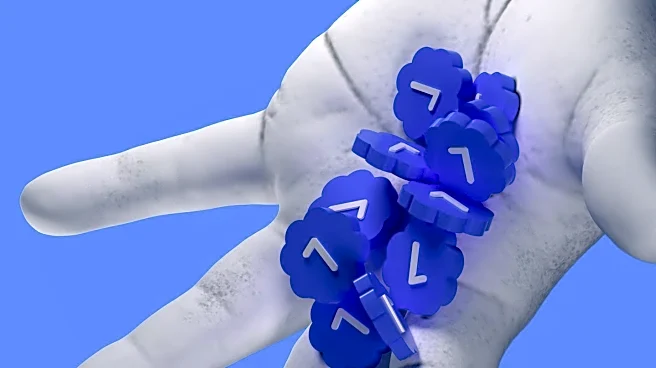What's Happening?
A new study has introduced the PATCH system, which stands for 'proximity amplification and tagging of cytotoxic haptens.' This innovative approach involves the use of porphyrin-zirconium catalysts incorporated
into nanoparticles, capable of proximity labeling in deep tissue in vivo. The system utilizes fluorescein-based probes that become immunogenic once covalently linked to proteins, allowing for spatial control of protein labeling with synthetic antigens. PATCH was used with bispecific T cell engagers (BiTEs) to promote TCR activation, enhancing T cell clustering and eradicating solid tumors in mice. This method presents a promising application of proximity labeling in immunotherapy.
Why It's Important?
The PATCH system represents a significant advancement in immunotherapy, offering a novel method to control immune cell signaling and enhance the effectiveness of cancer treatments. By enabling precise spatial control of protein labeling, PATCH can improve the targeting of immune responses, potentially leading to more effective and less invasive treatments for solid tumors. This technology could have broad implications for the field of oncology, providing new strategies for combating cancer and improving patient outcomes. The ability to enhance T cell activation and clustering through proximity labeling may also open new avenues for research and development in immunotherapy.
What's Next?
Further research is needed to explore the full potential of the PATCH system in clinical settings. Studies will likely focus on optimizing the system for human use, assessing its safety and efficacy in larger trials, and exploring its applicability to other types of immune cells and diseases. The development of PATCH could lead to new collaborations between researchers and pharmaceutical companies, aiming to translate this technology into viable treatments. As the system is refined, it may become a key component in the next generation of immunotherapy approaches.
Beyond the Headlines
The ethical implications of proximity labeling in immunotherapy include considerations of patient safety and the potential for off-target effects. As the technology advances, regulatory frameworks will need to address these concerns to ensure safe and effective implementation. The PATCH system's ability to enhance immune responses through spatial control may also influence the development of personalized medicine approaches, tailoring treatments to individual patient needs and improving therapeutic outcomes.











